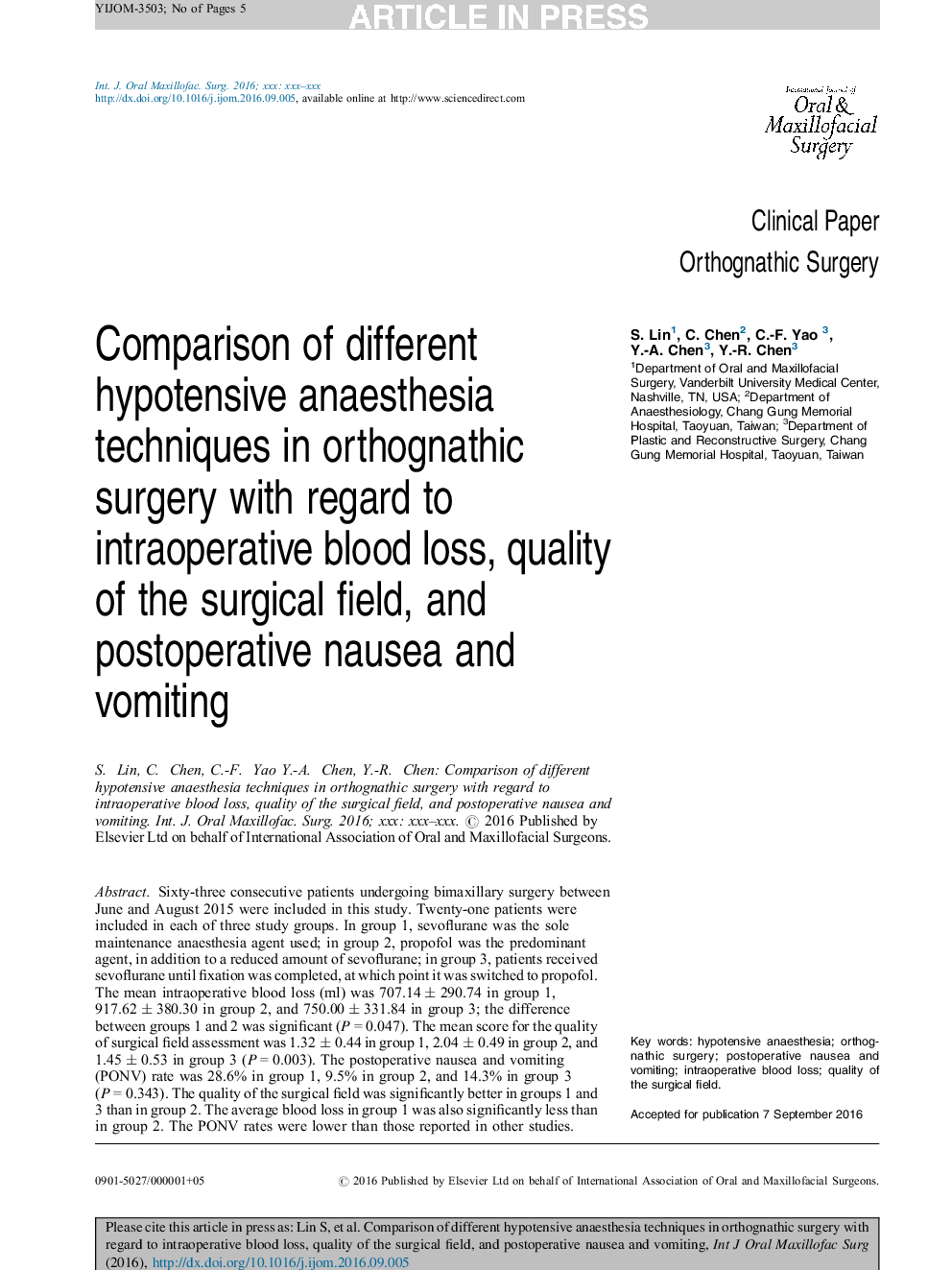| Article ID | Journal | Published Year | Pages | File Type |
|---|---|---|---|---|
| 5638814 | International Journal of Oral and Maxillofacial Surgery | 2016 | 5 Pages |
Abstract
Sixty-three consecutive patients undergoing bimaxillary surgery between June and August 2015 were included in this study. Twenty-one patients were included in each of three study groups. In group 1, sevoflurane was the sole maintenance anaesthesia agent used; in group 2, propofol was the predominant agent, in addition to a reduced amount of sevoflurane; in group 3, patients received sevoflurane until fixation was completed, at which point it was switched to propofol. The mean intraoperative blood loss (ml) was 707.14 ± 290.74 in group 1, 917.62 ± 380.30 in group 2, and 750.00 ± 331.84 in group 3; the difference between groups 1 and 2 was significant (P = 0.047). The mean score for the quality of surgical field assessment was 1.32 ± 0.44 in group 1, 2.04 ± 0.49 in group 2, and 1.45 ± 0.53 in group 3 (P = 0.003). The postoperative nausea and vomiting (PONV) rate was 28.6% in group 1, 9.5% in group 2, and 14.3% in group 3 (P = 0.343). The quality of the surgical field was significantly better in groups 1 and 3 than in group 2. The average blood loss in group 1 was also significantly less than in group 2. The PONV rates were lower than those reported in other studies.
Related Topics
Health Sciences
Medicine and Dentistry
Dentistry, Oral Surgery and Medicine
Authors
S. Lin, C. Chen, C.-F. Yao, Y.-A. Chen, Y.-R. Chen,
